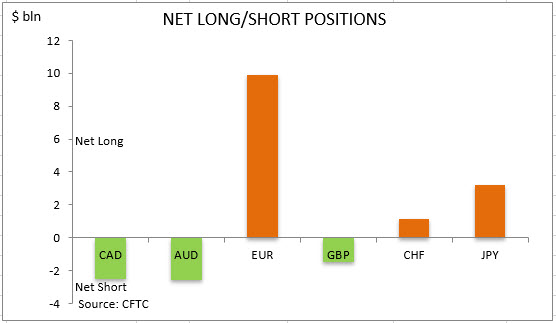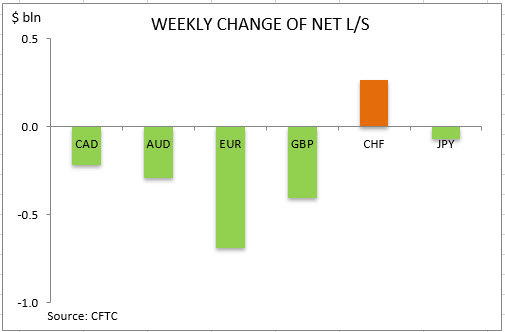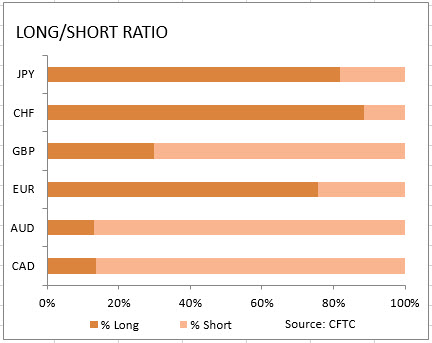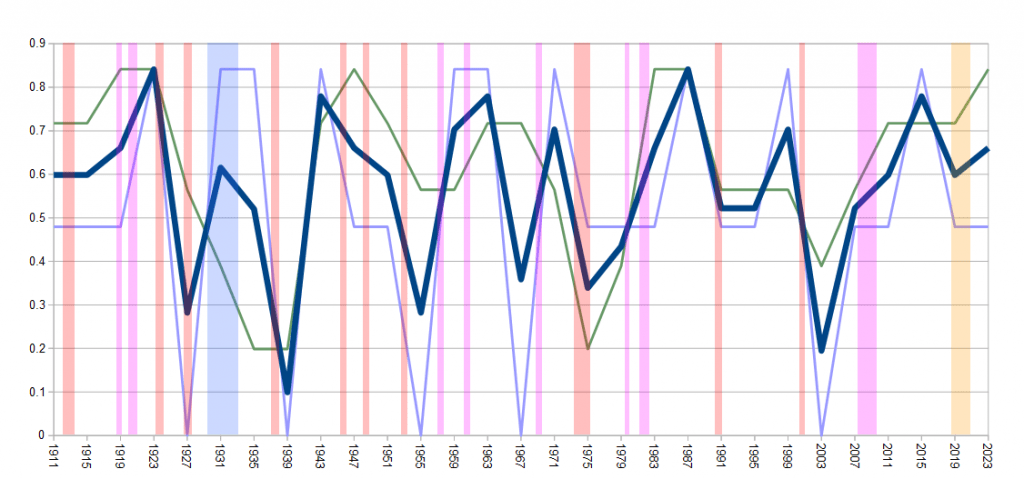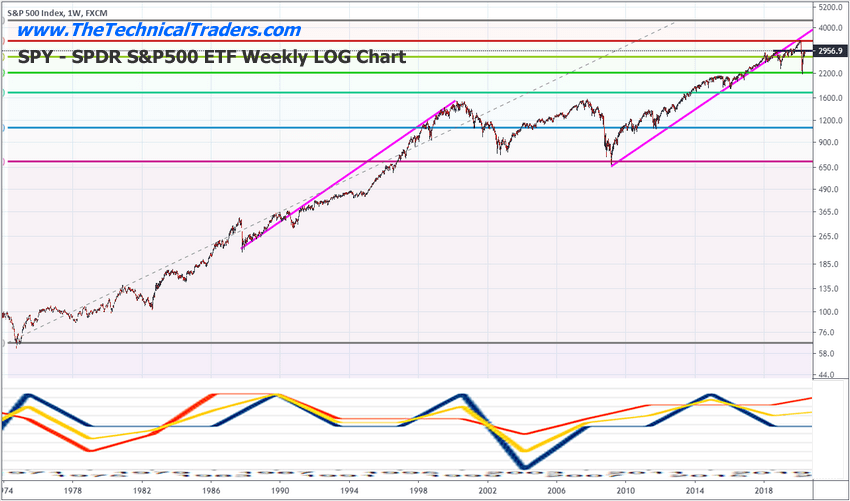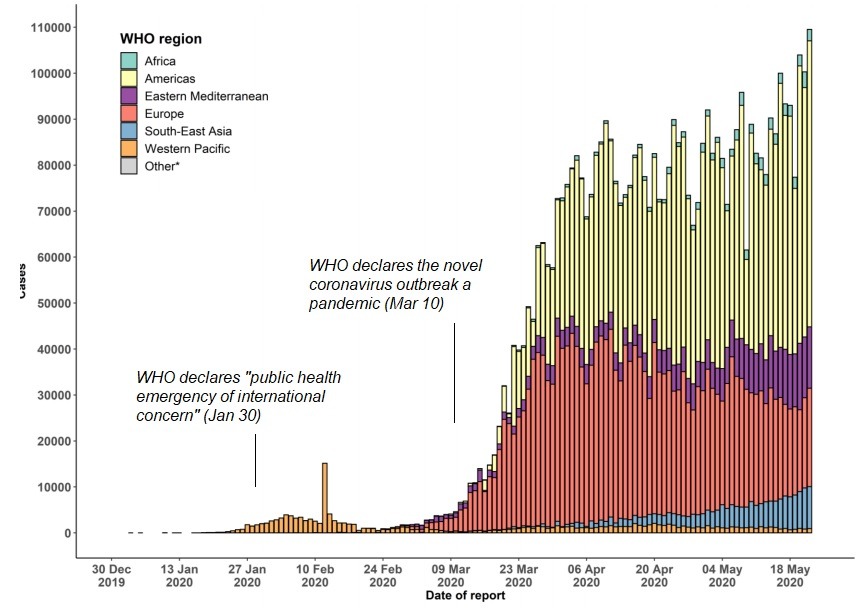By CentralBankNews.info
Israel’s central bank left its main interest rate unchanged at 0.10 percent and while its staff now sees less of a economic contraction this year than last month, the monetary policy committee still left the door open for further easing if the crises were to continue.
In April the Bank of Israel (BOI) cut its key rate for the first time in five years in response to the economic slowdown from measures to contain the COVID-19 pandemic and has also been using a range of other monetary tools to boost accommodation and ensure the orderly functioning of financial markets.
“The Committee will expand the use of the existing tools, including the interest rate tool, and will operate additional ones, to the extent that it assesses that the crises is lengthening and it is necessary to achieve the monetary policy goals and to moderate the negative economic impact created as a result of the crises,” BOI said.
But compared with its last policy statement in April, BOI staff is more upbeat as some of the restrictions imposed to contain the spread of the coronavirus have been lifted.
Real time data point to a recovery of economic activity in some industries, though activity is still low and in other industries where limitations have not been removed, activity remains around the lowest level.
In a special update to its economic forecast, the bank’s staff now sees an economic contraction this year of 4.5 percent, less than April’s estimate of a 5.3 percent contraction.
In 2021 Israel’s gross domestic product is seen expanding 6.8 percent, down from April’s forecast of 8.7 percent, assuming there won’t be another wave of infections and restrictions.
BOI said the first estimate of gross domestic product in the first quarter shows an annual 7.1 percent contraction.
The gradual removal of restrictions after the Passover holiday is reflected in economic activity but the recovery is expected to take a long time and the adverse impact will be notable, BOI said.
Israel’s shekel was volatile in March, plunging just over 9 percent from March 1 to March 18 before the central bank offered $15 billion in currency swaps, helping the shekel firm so it was only down 2.8 percent by the end of the month against the U.S. dollar.
This month it has been more stable, trading at 3.52 to the dollar today to be down 1.7 percent since the start of the year.
BOI noted the shekel was now back to its pre-crises level, saying “to the extent that the exchange rate stabilizes at this level, it will weigh on the recovery of exports, particularly in view of the decline in global demand, and on the return of inflation to within the target range.”
Israel’s inflation rate has decelerated sharply, with consumer prices down 0.6 percent in April from zero percent in March. In April BOI’s staff forecast inflation this year would average a negative 0.8 percent before rising to a positive 0.9 percent in 2021.
The fall energy prices has put downward pressure on inflation worldwide and BOI said short-term inflation expectations are below its target range of 1.0 to 3.0 percent while medium and long-term expectations are within its range.
“At this point, there are no signs of an inflationary impact from the adverse shock to supply,” BOI said, adding the crises has made it more difficult to calculate and analyze the meaning of changes to prices.
The Bank of Israel published the following statement:
“· The coronavirus crisis has led to an unprecedented contraction in the scope of economic activity and to a steep increase in the number of jobseekers. The gradual process of removing the restrictions that the government imposed on movement and activity is beginning to be reflected in economic activity, though the adverse impact on the economy is still considerable and is expected to persist. The Research Department assesses, under the assumption there won’t be an additional wave of infections and a renewed increase in the severity of the limitations, that after a marked contraction in 2020, GDP growth will recover rapidly in 2021, but that the unemployment rate at the end of 2021 will be higher than what it was just prior to the crisis.
· According to the Research Department’s assessment, as of the middle of May, the scope of the economy’s shutdown had declined by close to half in light of the removal of the restrictions. Real time indicators of economic activity point to a recovery in some industries, though the level of activity continues to be low and in the industries in which the main limitations have not yet been removed it remains around the lowest level, and the recovery is reflected only partly in the labor market.
· Many countries are in various stages of a gradual return to economic activity under health-related limitations, but the magnitude of the global economic crisis is still high. International institutions revised their forecasts downward, and the economic slowdown is expected to worsen in the second quarter. The magnitude of the crisis has led to a broad and unprecedented policy response by central banks and by governments.
· The policy steps of central banks worldwide has brought about a partial recovery in capital markets. The sharp declines in equity markets were to varying degrees reversed and government bond markets have stabilized. The Bank of Israel’s own activity has markedly reduced the yield on government and corporate bonds in Israel.
Bank credit has increased during the course of the crisis, primarily in light of the growth in business credit and in mortgages, but credit to small businesses and consumer credit declined. The activity of the funds to extend credit to small and medium sized businesses, with partial · government guarantees, led to a decline in the average interest rate on credit to small businesses. After a halt in issuance in the corporate bond market in March, there was a recovery in the issuance in April and May.
· Since the previous interest rate decision, the shekel has strengthened by 2.2 percent in terms of the effective exchange rate, and the exchange rate is back to its pre-crisis level. To the extent that the exchange rate stabilizes at this level, it will weigh on the recovery of exports, particularly in view of the decline in global demand, and on the return of inflation to within the target range.
· The downward trend in the inflation environment continues, particularly against the background of the decline in energy prices. In April, the annual inflation rate was -0.6 percent, and short-term inflation expectations are below the target while medium and long-term expectations are within the target range. At this point, there are no signs of an inflationary impact from the adverse shock to supply. Due to the crisis, there is a methodological difficulty in calculating the CPI and in analyzing the meaning of measured changes in prices.
In view of the magnitude of the crisis’s adverse impact on economic activity, the Committee is utilizing a range of tools in order to increase the extent of the monetary policy accommodation and to ensure the continued orderly functioning of the financial markets. The Committee will expand the use of the existing tools, including the interest rate tool, and will operate additional ones, to the extent that it assesses that the crisis is lengthening and it is necessary to achieve the monetary policy goals and to moderate the negative economic impact created as a result of the crisis.
For the file of figures accompanying this notice, click here.
The coronavirus crisis led to an unprecedented contraction in the scope of economic activity and to a steep increase in the number of jobseekers. Based on the first estimate of National Accounts data, GDP contracted by 7.1 percent in the first quarter, in annual terms, as a result of the shutdown of a notable part of economic activity in the middle of March (Figure 1 in the attached data file). The gradual process that has occurred after the Passover holiday, of removing the restrictions that had been imposed by the government on movement and activity in order to halt the spread of the virus, was reflected in economic activity as well, though the recovery is expected to take a long time and the adverse impact on the economy is expected to be notable.
According to the Research Department’s staff forecast, the scope of the economy’s shutdown, which was estimated to be approximately 36 percent of activity at the peak of the crisis, decreased to approximately 19 percent in the middle of May in view of the removal of the restrictions (Figure 4). Indicators of private consumption show a recovery; data on credit card purchases indicate an increase in the scope of purchases in most industries in which the strict limitations were removed, to close to the pre-crisis level. In industries in which the main limitations have not yet been removed (such as tourism, restaurants, education and leisure), the level of purchases remains near the lowest point (Figure 3). Indicators of the public’s mobility show an increase in the scope of mobility to workplaces, retail and recreation, beginning in mid-April (Figure 7). Goods exports declined sharply in March and April. Goods imports contracted as well, but the import of raw materials remained stable in view of the adverse impact on manufacturing being relatively moderate (Figures 8-9). Data on services exports are still not available for the crisis period but a sharp decline is expected in exports of tourism and transportation services. The Business Tendency Survey indicates a deterioration in the economic situation in March and April, in addition to an increase in companies’ difficulty in attaining credit (Figure 2).
The partial recovery of economic activity is only part reflected in the labor market. At the end of April, there were 1.15 million people claiming unemployment benefits—28 percent of the economy’s workforce. Israel Employment Service data indicate that in May, 141,000 people had returned to work and that there were 41,000 new jobseekers, though apparently the return to work is reported with a lag so that this is very likely to be an underestimation. Real-time surveys among companies, conducted by the Central Bureau of Statistics, indicated that in the middle of April, the share of active employees was around 61 percent, and it increased to about 71 percent in the beginning of May, with notable variance among the industries (Figure 5).
In view of the ongoing crisis, the Research Department published a special update to its macroeconomic forecast that was published in April. The Department currently expects a contraction in 2020 GDP of 4.5 percent (compared with a contraction of 5.3 percent in the April forecast), and a growth rate of 6.8 percent (as opposed to 8.7 percent in the April forecast) in 2021, assuming that there will not be another wave of infections and a renewed increased severity of the limitations. The unemployment rate in the second half of 2020 is expected to rise to 8.5 percent (compared with 8 percent in the previous forecast) and to decline to 5.5 percent at the end of 2021 (as opposed to 4 percent). In 2020, the government budget deficit is expected to be 11.5 percent of GDP and the debt to GDP ratio is expected to increase to approximately 75 percent. The Research Department assesses that in a case of an outbreak of a second wave of infection in the final quarter of the year, GDP in 2020 is expected to contract even more sharply, by approximately 8 percent, and the unemployment rate is expected to increase to 11 percent in the fourth quarter.
There is a continued decline in the inflation environment, and at this stage, no inflationary impact is seen from the negative shock to supply. The March and April CPI readings were slightly higher than expected—the CPI for March increased by 0.4 percent and the CPI for April decreased by 0.3 percent, but the rate of inflation over the past 12 months declined sharply to a negative rate of 0.6 percent, mainly due to the significantly negative contribution of the energy component (Figure 12). The annual inflation rate measured by the CPI excluding energy and fruit and vegetables continued its downward trend, and in April it was 0.2 percent. There is a methodological difficulty in calculating the CPI and in analyzing the meaning of measured changes in prices so long as the strict limitations on economic activity lead to numerous goods and services not being consumed, and their prices not being able to be measured, and there is a sharp change in the composition of households’ consumption basket. One-year inflation expectations from most sources continued their trend of decline until the middle of May. In recent days, there was a slight increase, but they are all lower than the target. There was some increase in expectations derived from the capital market for the second year, and those expectations for medium and longer terms did not change markedly and they are anchored within the target range. Since the previous interest rate decision, the shekel strengthened by 2.2 percent in terms of the effective exchange rate, and the exchange rate is similar to its pre-crisis level (Figure 15). To the extent that the exchange rate stabilizes at this level, it will weigh on the recovery of exports, particularly in view of the negative impact on global demand, and on the return of inflation to within the target range.
Bank of Israel activity in the financial markets moderated the strong volatility that characterized them at the outbreak of the crisis, and in particular, markedly reduced the yield on government bonds (Figure 16) and on corporate bonds (Figures 18–19), despite the increase in the government deficit and in the risk in business credit. After the strong shock in markets in March, unprecedented policy measures taken by central banks worldwide led to a change in the trend in capital markets. The sharp declines in equity markets were partly corrected (Figure 28). Government bond markets around the world stabilized,
Bank credit increased during the course of the crisis primarily against the background of increases in business credit, mortgage balances, and the activity of funds to extend partially government-guaranteed credit to small and medium sized businesses, which also led to a decline in the average interest rate on credit to small businesses. However, the overall volume of credit to small businesses and of consumer credit contracted, partly in view of the decline in activity and in demand for credit, and partly in view of the increased risk for small businesses in industries negatively affected by the crisis. In contrast, the banks enabled nearly a half-million businesses and households to defer loan repayments for several months, at a total amount of NIS 6.2 billion (Figure 21). In March, there was a steep increase in mortgage volumes as many borrowers rushed to close on the interest rates agreed on prior to the crisis, and in April there was a decline in mortgage volume with some increase in the interest rate. After a halt in the scope of issuance in the corporate bond market in March, there was a recovery in issuance in April and May.
Many countries are in various stages of a gradual return to economic activity under health-related limitations, but the magnitude of the global economic crisis is still high, particularly in the services industries. International institutions revised their forecasts downward, and the economic slowdown is expected to worsen in the second quarter (Figure 23). The risks to activity are still notable, and particularly the risk for the outbreak of a second wave of the pandemic. The tension between the US and China and the political risks in Europe are also weighing on a potential recovery. In contrast, the increased magnitude of the crisis led to a broad policy response by central banks and by governments; many central banks reduced interest rates and took additional accommodative monetary steps, some of which were unprecedented. Governments put into operation comprehensive plans for expanding public expenditure, compensating those negatively impacted by the crisis, and extending credit to the business sector. The crisis led to a decline in the inflation rate worldwide and to a sharp decline in commodity prices (Figures 25–26); the price of oil fell sharply although it has recovered partly in recent days, with exceptional volatility.
The minutes of the monetary discussions prior to this interest rate decision will be published on June 8, 2020. The next decision regarding the interest rate will be published at 16:00 on Monday, July 6, 2020, following which the Governor will hold a press briefing.”




 Article by ForexTime
Article by ForexTime
